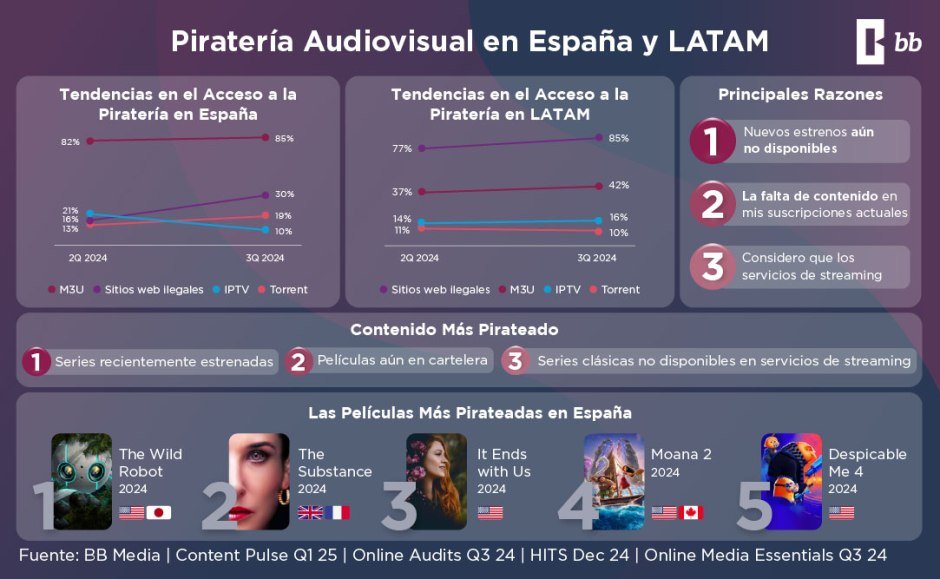Audiovisual piracy is a major issue for the entertainment industry, affecting revenue streams, employment, and the sustainability of content creation, according to BB Media.

As digital access expands, piracy methods evolve, making it increasingly difficult to control unauthorized distribution. In regions such as Latin America, piracy rates have remained high, with over 40 percent of internet-connected households engaging in some form of illegal streaming, equating to nearly 24 million homes.
Similarly, Spain faces a significant challenge, where 30 percent of households rely on unauthorized services to access movies, series, and live sports content. The methods used vary by region, with Latin America favoring illegal streaming websites and Spain leaning toward piracy apps and M3U playlists.
Users resort to piracy for multiple reasons, the most significant being the limited availability of desired content on the legal streaming platforms they subscribe to. On average, Spanish households subscribe to 2.36 platforms, while Latin American households average 2.26, yet even with multiple services, users often struggle to find specific titles.
The delay in making new movie and series releases available on streaming platforms also contributes to piracy, as consumers turn to illegal sources to access content not yet legally offered in their region. Sports piracy is another major issue, with football leading as the most illegally streamed sport, followed by combat sports and motorsports. High-profile leagues and first-division tournaments are among the most frequently pirated events.
Despite the widespread availability of legal streaming services, piracy remains prevalent, with recent movie releases ranking among the most illegally distributed content. Titles such as The Wild Robot (2024) and The Substance (2024) have been pirated extensively, despite being available on multiple legal platforms. Popular series, including The Penguin (2024), Highway (2024), and High Potential, have also been heavily pirated. This trend underscores the challenge of ensuring that legitimate platforms meet consumer demand effectively.
Addressing audiovisual piracy requires a comprehensive and collaborative approach. Governments, technology companies, and copyright organizations are actively working to combat illegal content distribution by blocking unauthorized websites, taking down infringing material, and raising awareness about the consequences of piracy. Strengthening legal enforcement measures is crucial, but equally important is improving content accessibility. Expanding the availability of movies and series across platforms and ensuring affordability can help steer consumers away from piracy.
For content creators, developing strategies to counter piracy is essential for sustaining their work. Leveraging anti-piracy technologies, such as watermarking and real-time tracking of unauthorized content, can help detect and prevent illegal distribution. Additionally, enhancing user experience on legal platforms by offering flexible pricing models, bundled content, and exclusive features can make legal alternatives more appealing. Engaging with audiences through educational campaigns that highlight the risks of piracy, including security threats and data breaches, can also help shift consumer behavior toward legal consumption.
While piracy continues to challenge the entertainment industry, understanding its trends and drivers enables the sector to refine its strategies. By implementing stronger legal frameworks, improving accessibility, and adopting consumer-friendly approaches, the industry can work toward reducing piracy’s impact and ensuring a sustainable future for content creators and distributors.
Baburajan Kizhakedath
